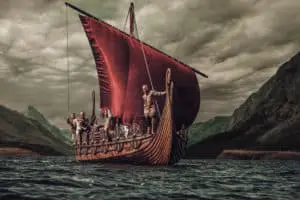Irish Pens: The Unsung Heroes of World Literature and Their Impact on Writing

Updated On: April 22, 2024 by Maha Yassin
In the tapestry of world literature, Irish pens hold a significant place, weaving narratives that have been pivotal in the collective storytelling journey. Irish writers have contributed markedly to the richness of global literary heritage through the centuries with their distinctive voice and thematic depth. From the mythic sagas steeped in Celtic lore to modern-day masterpieces, Ireland’s literary odyssey reflects a land of imagination, wit, and profound cultural narratives.
Our understanding of literature would be incomplete without the mention of the emerald isle’s contributions. The country has birthed formidable literary giants whose works have traversed international borders, influencing countless readers and writers beyond Irish shores. Moreover, the act of translation has played a crucial role in the proliferation of these works, allowing the subtle intricacies of Irish storytelling to resonate in other tongues. The enduring legacy of these literary heroes and the ongoing narrative of Irish literature are testimonies to Ireland’s indomitable spirit and creativity.
The Roots of Irish Literary Tradition
Irish literature boasts a profound and enchanting history, woven through time from ancient Celtic influences and medieval mastery to the spirited Gaelic Revival. Here, we unveil the bedrock of this literary landscape, where myth intertwines with reality and cultural identity is celebrated in ink and paper.
Medieval Irish Literature
In the medieval era, Ireland’s literary fabric was richly embroidered with tales of heroes, ethereal entities, and ancient Celtic cultural practices. Manuscripts such as The Book of Kells and The Book of Leinster offer us precious glimpses into medieval Irish aristocratic lifestyles and their intertwined relationship with storytelling. Surviving the Norman invasions, these texts reflect a society that immensely valued orality and literacy, and they chronicled everything from law to lore, preserving a powerful, intellectual heritage.
Gaelic Revival and Cultural Identity
In the late 19th and early 20th centuries, the Gaelic League sparked a fervent cultural renaissance aimed at reviving traditional Irish language and practices. This movement, a response to centuries of English dominance, reignited a sense of pride in Ireland’s unique heritage. Principally, it sought to reclaim the Gaelic language, intimately connected to Ireland’s identity and history, and to renew interest in Ireland’s literary and artistic past, thus anchoring a resurgence in Irish literature that echoed the country’s classical authors and ancient narratives.
Defining Characteristics of Irish Literature
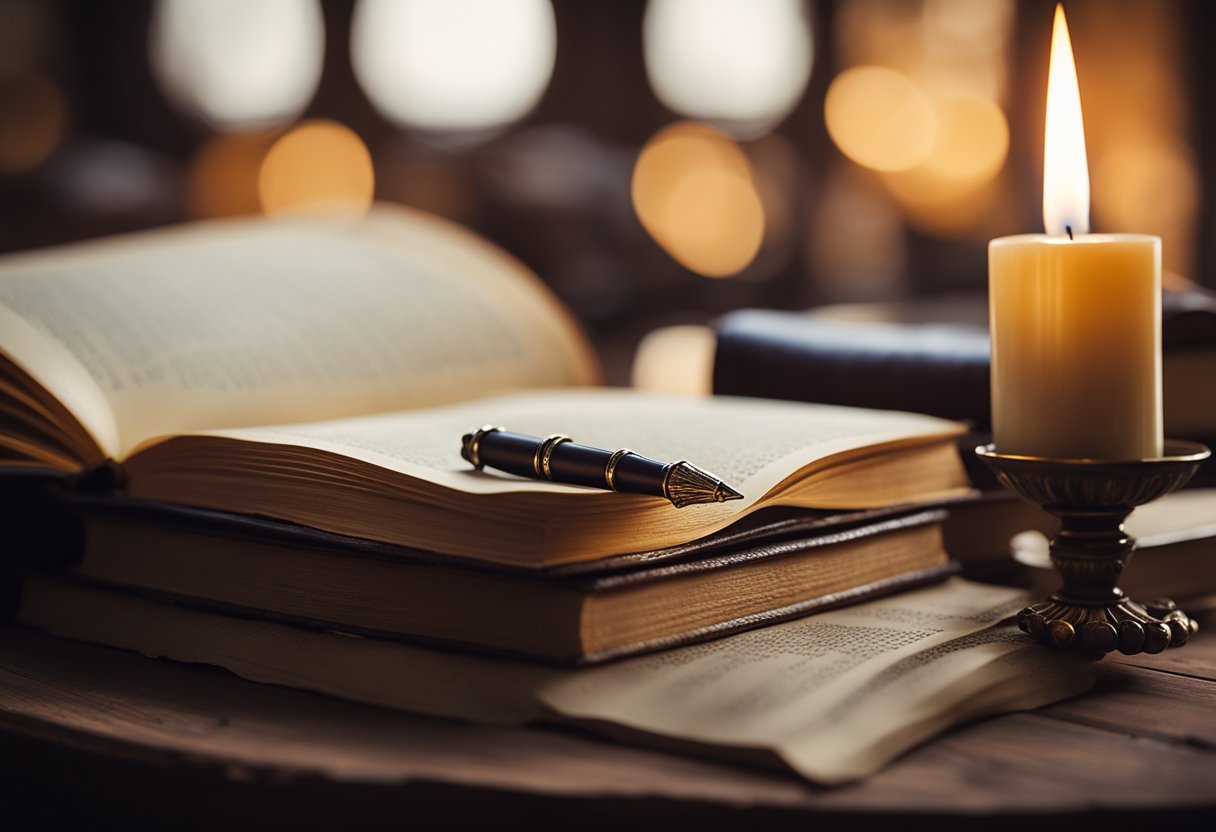
Irish literature has a distinct quality that distinguishes it from other literary traditions. It blends a rich language and lexicon grounded in Celtic origins with thematic elements that reflect the nation’s journey through heroism, cultural shifts, and social issues.
Language and Lexicon
The Irish language, with its roots in Celtic history, has given rise to a deeply descriptive and lyrical lexicon. Vocabulary in Irish literature often includes terms from the Irish language, providing a unique cadence and rhythm to the storytelling. Our literature utilises these linguistic elements not merely as a form of communication but as a means of painting vivid pictures and evoking the deep-rooted heritage of Ireland.
Thematic Elements
Thematically, Irish literature often navigates the confluence of personal and national identity with storytelling that delves into social issues and cultural factors. The heroic narratives, often derived from ancient Celtic traditions, underscore our literature’s engagement with the concept of the hero in both historical and contemporary contexts. Irish writers have articulated the complexities of our society’s fabric from mythic tales to modern narratives, through nuanced stories imbued with cultural significance.
Irish Pens: Iconic Figures in Irish Literary History
We must acknowledge the profound impact that Irish writers have had on the landscape of world literature. Our journey here begins with the trailblazers of the past and carries through to the vibrant voices of today.
Edmund Burke to Oscar Wilde
Edmund Burke set the stage for eloquence in political thought during the 18th century, his writings resonating beyond Ireland and influencing Western political commentary. Burke’s philosophical inquiries into society and government remain pivotal for understanding the evolution of modern political discourse.
Jonathan Swift, another luminary of the 18th century, was a master satirist, perhaps best known for his work Gulliver’s Travels. Swift’s acerbic wit and social commentary highlighted the absurdities of the human condition, and his contributions as a literary critic were equally significant, shaping the standards of literary evaluation.
Oliver Goldsmith, a contemporary of Swift, delivered a blend of social commentary and pastoral romance. His works, including The Vicar of Wakefield and She Stoops to Conquer, display a unique mix of humour, satire, and sentiment, reflecting the complexities of Irish society.
The contributions of Maria Edgeworth to Irish literature cannot be overstressed. As a pioneering woman of letters, her novels, such as Castle Rackrent, brought insightful narratives on Irish rural life to the fore, influencing the development of the regional novel genre.
Oscar Wilde, striking and sharp, brought a new era of literary brilliance in the late 19th century. Wilde’s plays, especially The Importance of Being Earnest, and his only novel, The Picture of Dorian Gray, exemplify his ability to skirt the lines between high art and accessible commentary on Victorian society with unmatched wit and elegance.
George Bernard Shaw, Wilde’s contemporary, distinguished himself as a playwright and a fervent critic, contributing extensively to the Irish literary renaissance. His works, including Pygmalion, showcase the power of drama as a beacon for social thought and reform.
William Butler Yeats is a defining figure in Irish and world poetry. As one of Ireland’s foremost figures in modern literature, Yeats’s evocative compositions drew from the nation’s mythology and personal musings on life’s oscillations, earning him the Nobel Prize for Literature in 1923.
Contemporary Contributors
Transitioning to the modern era, the Irish tradition of literary excellence persists. Contemporary authors continue articulating the Irish experience, frequently exploring themes of identity and belonging and providing trenchant social and cultural observations.
Current writers emerge from the shadows of their literary forebears to forge narratives that resonate with a global audience. From profound poetry to piercing fiction and considered criticism, our contemporary contributors are a testament to the enduring legacy of Irish creativity and its place within the world’s rich tapestry of literature. We see the frontiers of Irish writing expanding as new voices are ushered onto the world stage, crafting stories that reflect the essence of our heritage and the multifaceted reality of modern Ireland.
The Irish Language’s Odyssey Through Literature
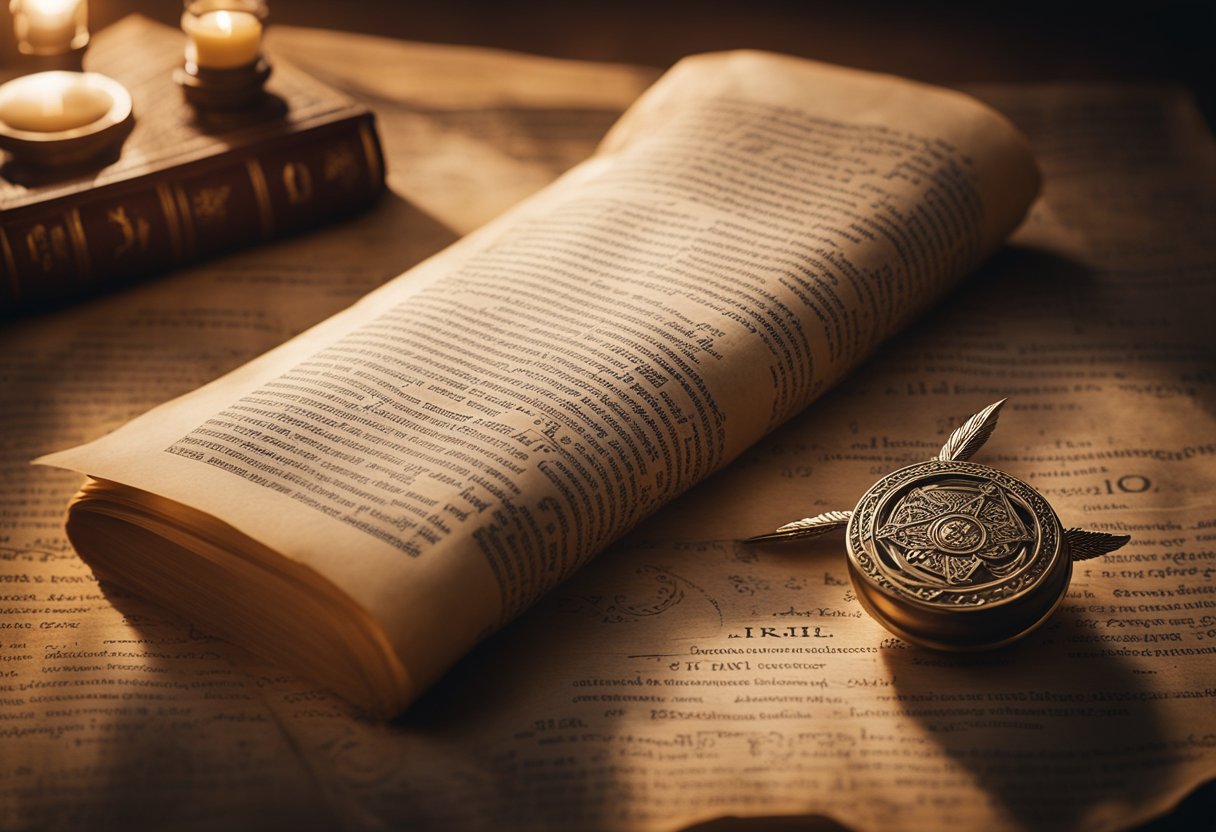
As we explore the rich tapestry of world literature, the Irish language stands prominently, marked by an evolution from ancient Gaelic scripts to influential modern publications that capture its unique cadence and rhythm.
From Gaelic to Modern Publications
With its deep roots in the annals of history, the Irish language stretches back to the early Christian period. Then, it was chiefly written in an alphabet that fell out of common usage in favour of the Latin script around the 7th century. This early Irish, now known as Old Irish, gives us the earliest glimpses of Gaelic literature, predominantly in the form of poetry and religious texts.
With time, particularly from the 12th to the 17th century, Middle and Early Modern Irish literature flourished, even as English influence grew and the Irish language faced decline. However, the late 19th and early 20th century witnessed a Gaelic Revival, aiming to preserve and promote Irish. This movement propelled the language into the public sphere, rejuvenating its literature and academic study.
During the 20th century, translations were crucial in bringing Irish literary works to a broader audience. Notably, translations into the English language allowed the inherent wit, eloquence, and cultural depth of Irish writing to be appreciated globally.
Our modern era has seen Irish works translated into multiple languages, even French, supporting a growing international interest. Contemporary writers continue to publish in Irish, demonstrating the language’s vitality and continuous journey through literature.
The Heroic Narrative: From Myth to Mainstream
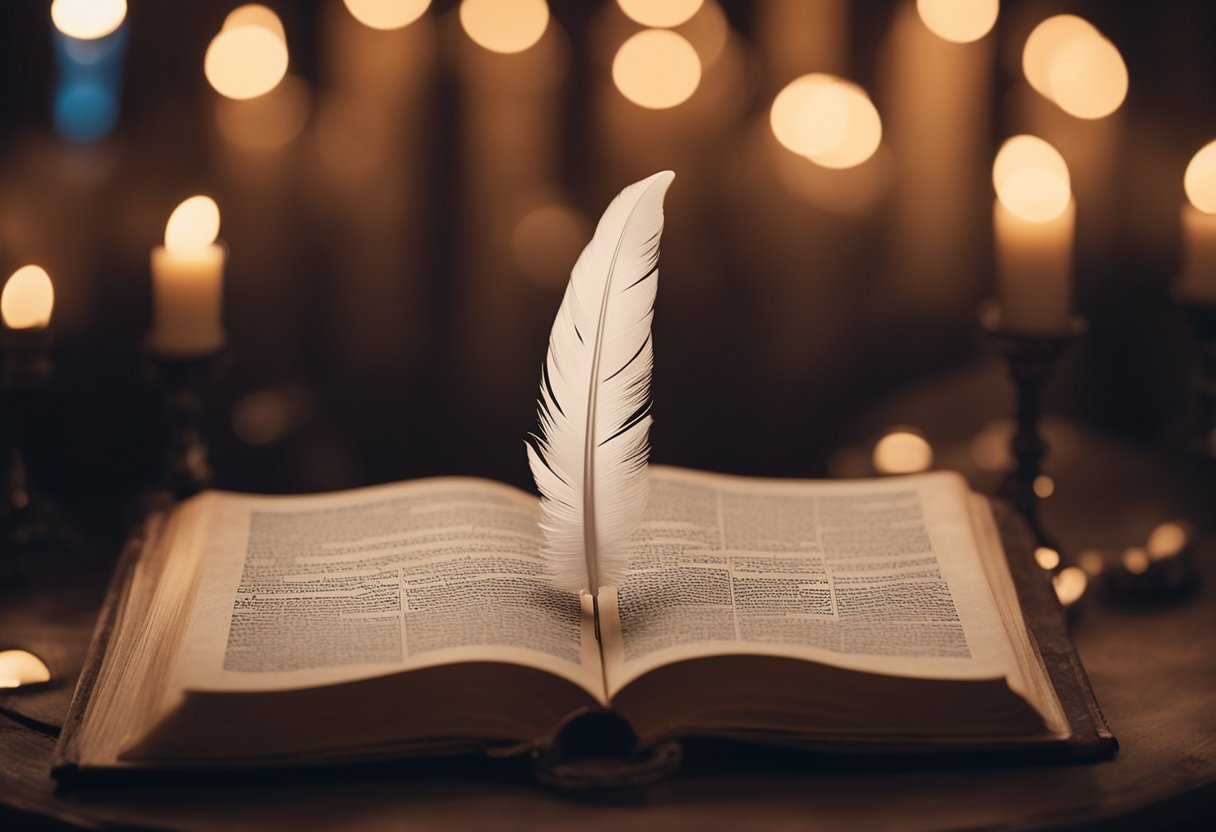
The fabric of Irish literature is interwoven with tales of formidable heroes whose deeds have transcended time. These characters, rooted in myth yet ever-present in our cultural consciousness, exemplify exceptional qualities that continue to inspire and resonate with us.
Cú Chulainn and the Mythological Cycle
Cú Chulainn, the quintessential hero of the Ulster Cycle, stands as a beacon of heroism in Irish mythology. Among the oldest of Gaelic stories, his story paints the picture of a warrior of supernatural strength and prowess. The Táin Bó Cúailnge (The Cattle Raid of Cooley), a central saga in the mythological cycle, details Cú Chulainn’s legendary defence of Ulster against overwhelming forces with little more than his martial skills and fabled spear, Gáe Bulg.
Finn Mac Cumhaill, another prominent figure in our mythological heritage, is renowned for his wisdom and leadership as much as his physical might; he embodies the desirable traits of a hero. His adventurers with the Fianna are recorded in the Fenian Cycle, stories laden with feats of bravery and moral fortitude.
Our literary tradition, rich with these and other heroic narratives, demonstrates our long-standing fascination with figures exemplifying boldness and courage. These heroes, from Cú Chulainn to Finn Mac Cumhaill, have not only shaped our understanding of what it means to be heroic but have also made an indelible imprint on the mainstream depiction of heroes, highlighting an innate desire for stories that speak to our shared values of courage and loyalty.
Translation and its Impact on Irish Literature
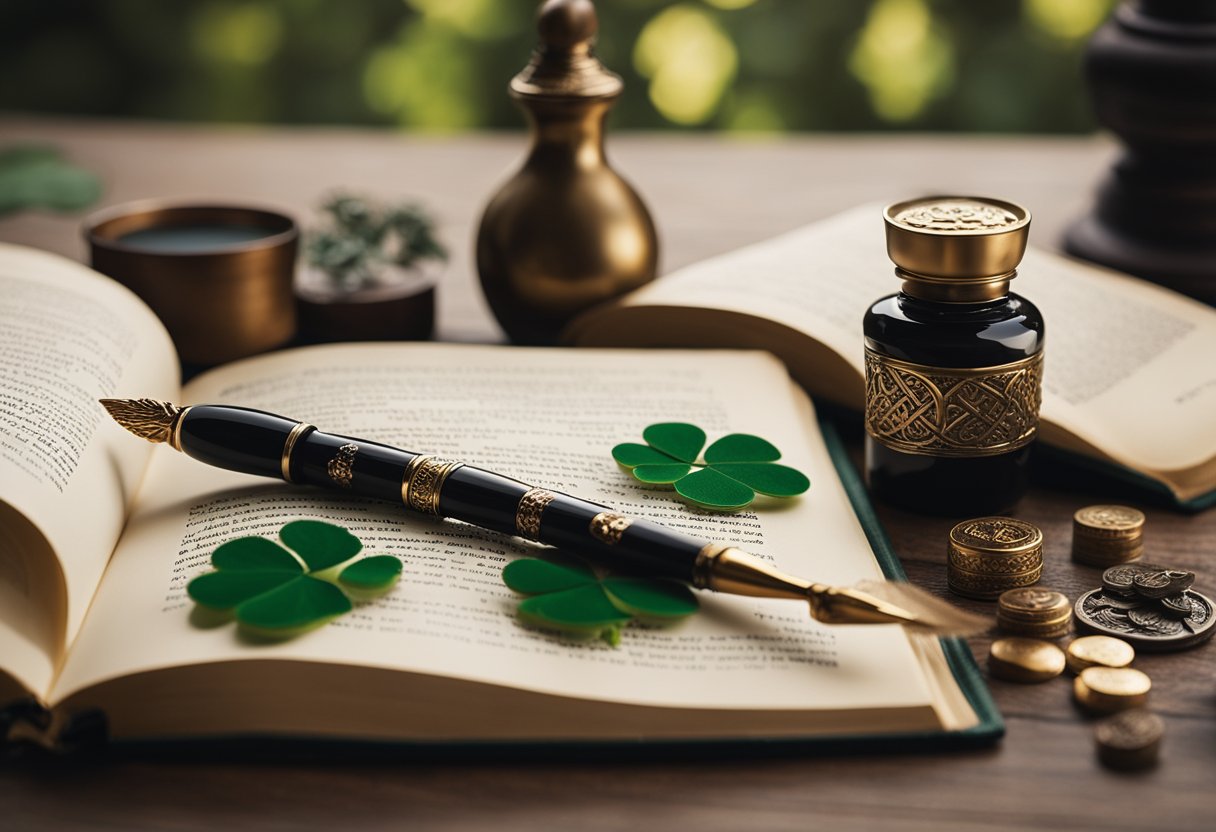
Translation has been pivotal in shaping Irish literature, particularly its global reach and influence. Irish stories have found a voice across linguistic boundaries through the dedicated work of translators.
The Role of Translators
Translators have been integral in bringing the nuances of Irish literature into English and vice versa. For example, Penguin Classics has published various translations for global audiences to enjoy, including seminal works of Irish literature. This effort has expanded the audiences for these works and preserved the original tone, style, and cultural context. Translators such as Edith Grossman, who has been awarded the OBE for her contributions to literature, have worked tirelessly to ensure that translations maintain the integrity of the original text.
Expansion and Influence
Translation has propelled Irish literature beyond its native borders, allowing its influence to permeate English literature and other languages. The work produced in Cambridge and other literary hubs has been crucial in weaving Irish narratives into the broader fabric of Latin and English literary traditions. The translation of religious texts like the Bible into English also exemplifies the importance of translation, as it enabled the spread of literature originally written in Latin or Irish to a wider English-speaking audience. This transcultural exchange enriches the source and target cultures, fostering a shared literary heritage.
Irish Writers and the English Novel

In discussing the relationship between Irish writers and the English novel, we focus on how Anglo-Irish literature has been pivotal in the formation of literary classics. This literature showcases a distinctive voice that has contributed significantly to the novel as a form, especially through writers like George Moore, whose works merit a comparative study.
Anglo-Irish Literature and Its Significance
Anglo-Irish literature is a testament to the complex historical and cultural interactions between Ireland and England. The term encapsulates the works of writers who, though Irish by birth or residence, typically wrote in English and often had an Anglo-Irish identity. George Moore serves as a key figure in this dialogue; his novels enriched the genre and provided a nuanced perspective on the cultural differences and similarities between the two Isles.
For readers, the significance of Anglo-Irish literature is twofold: firstly, it offers a lens through which to conduct a comparative study of Irish and English societal norms and narratives; secondly, it enhances our understanding of the novel’s evolution. The works of Anglo-Irish authors have become classics in their own right, contributing a unique cadence and thematic richness to the canon of English literature.
These contributions extend beyond the pages of the novels; they resonate with those who seek a deeper appreciation of the narrative traditions that have influenced generations of storytellers and continue to impact modern literature. Our examination underscores Anglo-Irish literature’s pivotal role in developing the English novel and highlights its enduring legacy within the literary world.
Sociopolitical Influences on Irish Storytelling
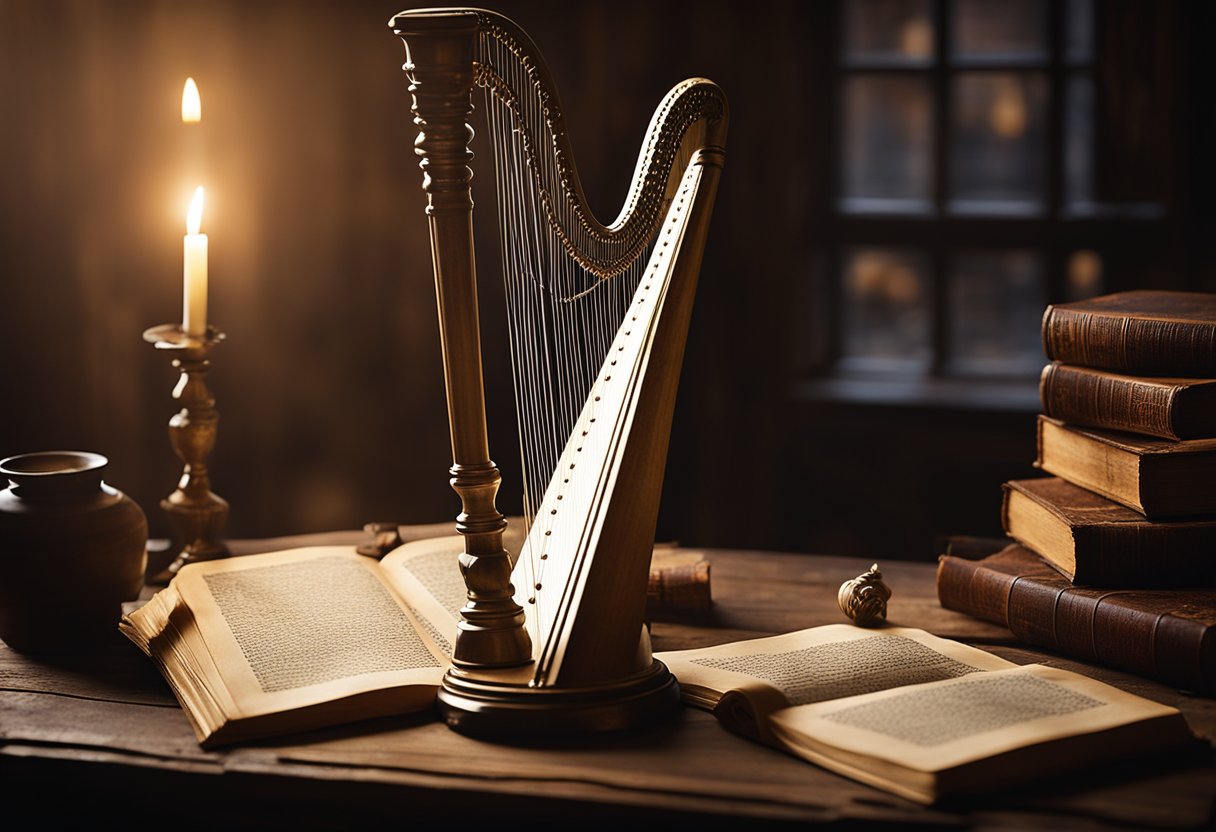
This section delves into the rich tapestry of Irish storytelling and its intricate association with the island’s sociopolitical upheavals. We unveil how historical events, from periods of famine to quests for freedom, have profoundly shaped the narratives and themes found in Ireland’s literary tradition.
From Famine to Freedom
The Great Famine of the 1840s, a catastrophic period in Irish history, not only led to mass emigration and demographic changes but also left indelible marks on the cultural memory woven into Irish stories. Literature from this era often reflects the desperation and struggle of a people in the face of extreme adversity. The famine becomes almost a character in these tales, shaping the narrative arc and influencing the development of the protagonists and their journeys.
Moving forward, Ireland’s quest for independence similarly reverberated through its literary works. The Easter Rising of 1916, a pivotal insurrection against British rule, inspired a generation of writers to infuse their works with themes of rebellion and resilience. Irish storytelling during this period predominantly mirrored the nationalistic fervour and the sectarian conflict that underscored the island’s fight for sovereignty.
Civil strife and the ensuing civil war further complicated the Irish narrative, introducing elements of treachery, loyalty, and the often-bleak aftermath of conflict into its literature. Stories from post-independence Ireland grapple with the dichotomy of achieving freedom at the cost of peace, providing heartbreaking and insightful reflections on the human condition.
Aristocratic violence and the tumultuous history involving the Anglo-Irish tensions have also been a source of inspiration for Irish writers. The portrayal of these relationships and class struggles has often highlighted the hardships faced by the common folk, sometimes drawing from political events to drive the plots of both fictional accounts and theatrical expressions.
In sum, the evolutions of Ireland’s societal and political landscapes have profoundly shaped and continuously redefined the craft of storytelling. Through the trials of famine, the striving for freedom, the scars of civil war, and the long shadow of historical events, Irish stories have become not just a form of entertainment but also a compelling medium for national reflection and identity. Each tale opens a window into the complexities of Irish life and offers a unique perspective into the indomitable spirit of its people.
The Synthesis of Poetry and Irish Culture
In the tapestry of world literature, Irish poetry shines with a unique interweaving of cultural identity and artistry, prominently through the endeavours of the Abbey Theatre and key literary figures.
The Abbey Theatre and Irish Poetic Movement
The Abbey Theatre, co-founded by W.B. Yeats and Lady Gregory, became a crucible for Irish literary talent, fostering an environment where poetry and drama merged to reflect Irish cultural motifs. Yeats, a towering figure in Irish poetry and dramatists such as John Millington Synge leveraged the stage to project the nation’s voice, intricately tying the essence of Ireland’s cultural revival to their works.
Similarly, poets like Padraic Colum and Austin Clarke embraced mythological and pastoral themes that mirrored Ireland’s identity and struggles, echoing the resonant call for national recognition. Thomas MacDonagh and others were inspired by the theatre’s nationalist ethos, further solidifying the Abbey’s role in shaping poetic expression.
Another profound influence was the mystic and poet AE (George William Russell), who cultivated a nuanced spiritual dimension within the poetic panorama. His work diverged from the political, distilling a more universal essence of the Irish spirit.
Our efforts at the Abbey Theatre fuelled a potent synthesis of drama and poetry, reinforcing our cultural narrative. This collaboration illuminated the potency of words in crafting an indelible image of Ireland that found its echoes in people’s hearts worldwide.
Ireland’s Literary Giants in the Global Context
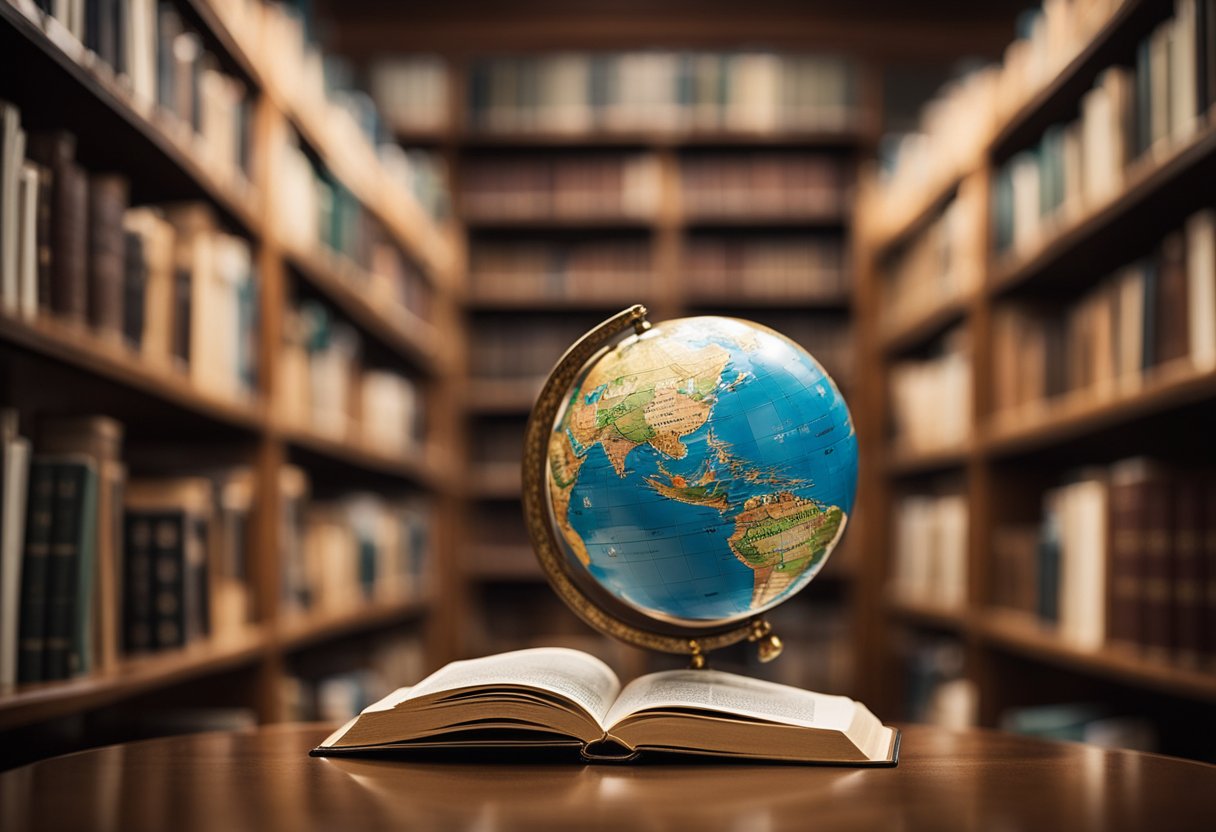
Ireland’s contribution to world literature is monumental, featuring a cohort of writers whose works have shaped English literature and resonated globally. Irish literary brilliance has often been closely linked to a unique national narrative, infusing a rich tapestry of themes that have universal appeal.
Influence on African and World Literature
Our literary giants have had a profound impact beyond our shores, particularly influencing African literature. W.B. Yeats and James Joyce have been studied and revered alongside other English-language writers, such as Chekhov, inspiring their original narratives and styles. Irish literary techniques and themes have seeped into the narrative strata of Africa’s storytelling traditions, echoing Ireland’s complex history of colonialism and national identity that often parallels Africa’s struggles.
Through global literature courses, Irish authors are routinely placed into conversation with African writers, examining the resonance of themes like emancipation and identity. Our writers have acted as beacons for African authors looking to express their voices in the post-colonial era, utilising the Irish models of modernism and post-modernism to shape their discourse in literature.
While Irish literature has its roots deeply planted in the soil of our homeland, the branches of its influence spread wide, intertwining with the canopies of world literature and contributing to a lush and diverse literary ecosystem.
Frequently Asked Questions

In this section, we address some of the most common enquiries about the rich tapestry of Irish literature, covering its most famous authors, characteristic themes, distinct qualities, historical influences, and overall impact on the world’s literary landscape.
Who are some notable authors in the Irish literary movement?
Many distinguished writers have graced Irish literature. Among them are Jonathan Swift, known for ‘Gulliver’s Travels’, Oscar Wilde with his masterpiece ‘The Picture of Dorian Gray’, and James Joyce, whose groundbreaking work ‘Ulysses’ has left an indelible mark on modernist literature.
What are the defining themes found within Irish literature?
Themes of identity, emigration, nationalism, and the complexities of social and familial ties commonly populate Irish literary works. This literature often reflects the nation’s turbulent history, its beautiful yet austere landscapes, and the resilient spirit of its people.
Can you elaborate on the characteristics that distinguish Irish literature?
The characteristics that set Irish literature apart include a deep-seated narrative tradition, a penchant for wit and lyrical prose, and a profound exploration of the human condition. The unique use of the English language, imbued with Celtic influences, gives Irish writing its distinctive cadence and rhythm.
How did the Medieval period influence Irish literary works?
The Medieval period significantly imprints Irish literature through its rich oral storytelling tradition. It brought forth a unique intermingling of myth, folklore, and history, evident in texts like ‘Lebor Gabála Érenn’ (The Book of the Taking of Ireland) and the tales of Cú Chulainn.
What impact did modernist Irish writers have on literature at large?
Modernist Irish writers like W.B. Yeats, Samuel Beckett, and the aforementioned James Joyce revolutionised the structure and style of literature with pioneering stream-of-consciousness techniques and a focus on existential themes, influencing countless writers and literary movements around the globe.
When did the majority of Ireland’s population first achieve literacy?
Only in the 19th century, following the implementation of the National School System in 1831, did literacy began to rise significantly throughout Ireland. This educational reform allowed a larger population to engage with and contribute to Ireland’s literary heritage.


